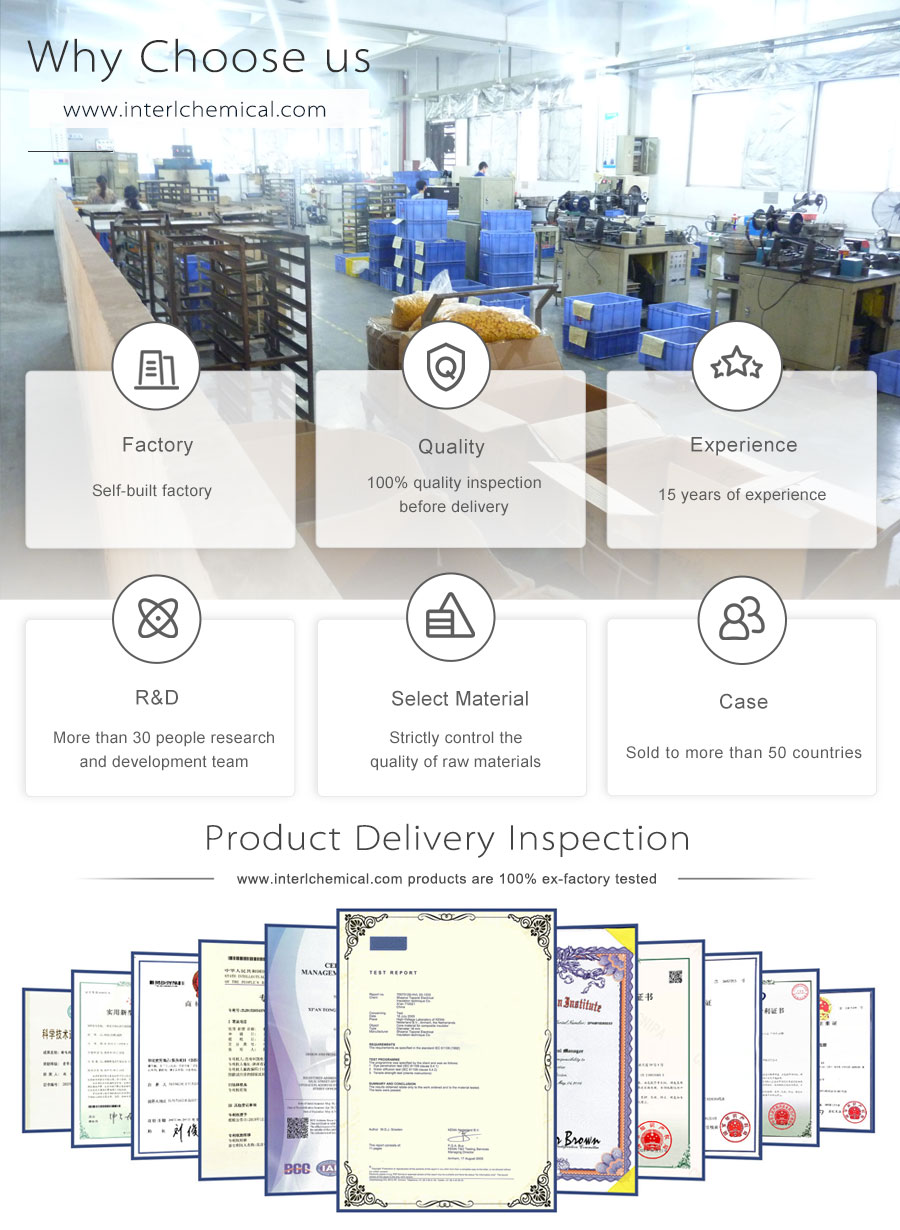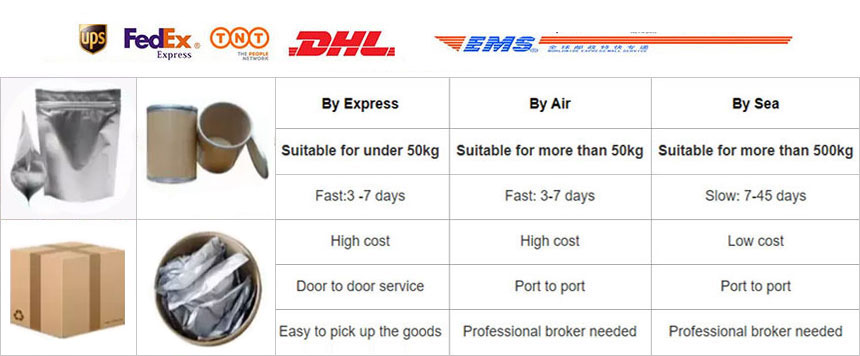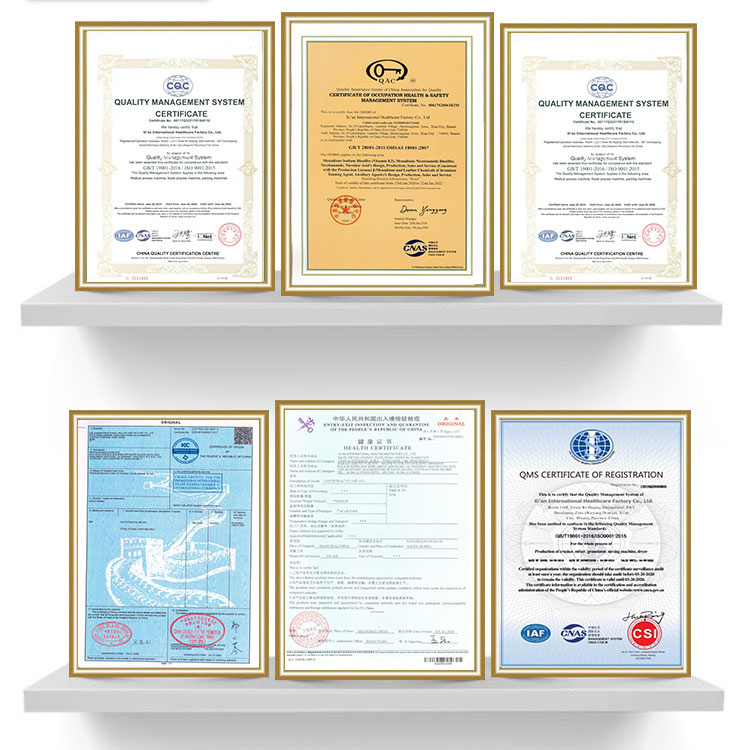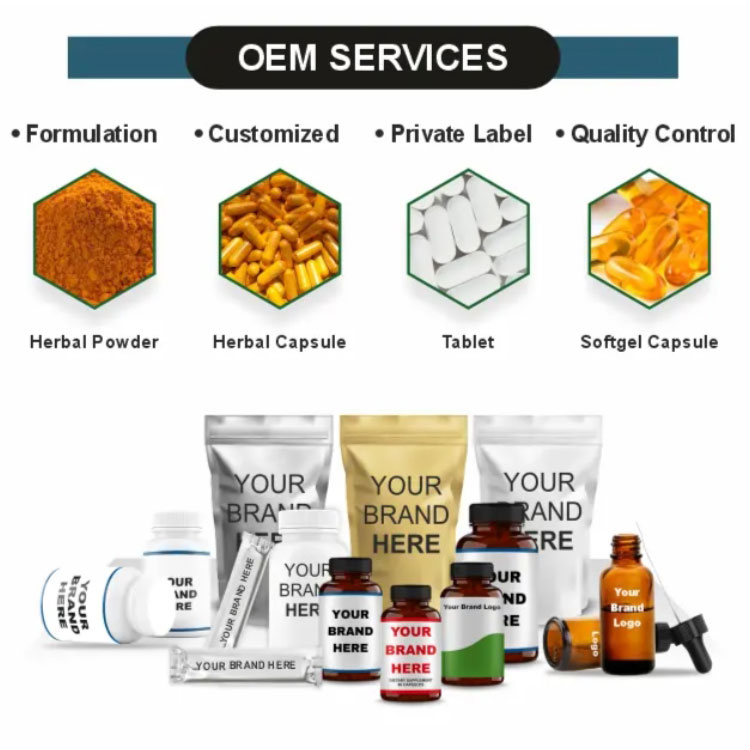Phone: 86-29-89601602
Mail: sales27@interlgroup.com
Add: Room 305 , 3/F , Haipai Decoration Office Building , Yudu Avenue , Yuncheng , Shanxi
Quinine hydrochloride hcl powder Raw Materials CAS 130-89-2
Product Overview:
Quinine hydrochloride powder is a chemical with the formula C20H25ClN2O2. A white, mercerized, sparkling acicular crystal that resists in hot air. Quinine hydrochloride is an alkaloid extracted from the bark of Cinchona. Quinine hydrochloride, used as an anti-malarial drug, is the active ingredient in cinchona extract and has been used as an anti-malarial drug since before 1633.
Quinine hydrochloride hcl powder Raw Materials CAS 130-89-2 Attributes
Product name:Quinine hydrochloride powder
CAS:130-89-2
MF:C20H25ClN2O2
MW:360.88
EINECS:205-001-1
Specification:Quinine hydrochloride powder
Sample:Quinine hydrochloride powder Avaliable
Appearance:white powder
Storage: Cool Dry Place
Brand:Global ASAP Nutrition Factory
Shelf Life: 2 Years
Test Method: HPLC
Quinine hydrochloride hcl powder Raw Materials CAS 130-89-2 Details
Uses and synthesis of Quinine hydrochloride powder
Quinine hydrochloride powder is a chemical with the formula C20H25ClN2O2. A white, mercerized, sparkling acicular crystal that resists in hot air. Quinine hydrochloride is an alkaloid extracted from the bark of Cinchona. Quinine hydrochloride, used as an anti-malarial drug, is the active ingredient in cinchona extract and has been used as an anti-malarial drug since before 1633.
Mechanism of action of Quinine hydrochloride powder
Inhibit DNA and RNA synthesis of malarial parasites: Quinine can insert between the double strands of malarial parasite DNA, hinder DNA replication and transcription, and thus inhibit nucleic acid synthesis of malarial parasites.
Influence on heme metabolism of malarial parasites: When malarial parasites grow and reproduce in red blood cells, they decompose hemoglobin to obtain nutrients and produce toxic heme. Malarial parasites polymerize heme to form non-toxic heme crystals. Quinine can bind to heme, prevent heme polymerization, lead to toxic heme accumulation, and kill malarial parasites.
Change the permeability of malarial parasite cell membranes: Quinine may affect the ion channels and membrane transport functions of malarial parasite cell membranes, change cell membrane permeability, and lead to malarial parasite death.
Immunomodulatory effect (possible): Some studies suggest that quinine may have a certain immunomodulatory effect and enhance the body's antimalarial immunity, but the specific mechanism is still unclear.

Drug interactions of Quinine hydrochloride powder
Drugs that increase quinine blood concentration and enhance toxicity:
CYP3A4 inhibitors: such as ketoconazole, itraconazole, erythromycin, clarithromycin, verapamil, diltiazem, cimetidine, ritonavir, etc. These drugs may inhibit the quinine metabolizing enzyme CYP3A4, resulting in increased quinine blood concentration and increased risk of poisoning.
Drugs that reduce quinine blood concentration and reduce efficacy:
CYP3A4 inducers: such as rifampicin, phenytoin sodium, carbamazepine, phenobarbital, etc. These drugs may induce quinine metabolizing enzyme CYP3A4, accelerate quinine metabolism, reduce blood concentration, and affect efficacy.
Drugs that increase the risk of arrhythmias:
Other drugs that prolong the QT interval: such as amiodarone, sotalol, erythromycin, fluoroquinolone antibiotics, tricyclic antidepressants, certain antipsychotics, etc. Combination with quinine may synergistically prolong the QT interval, increase the risk of arrhythmias, and even the risk of torsades de pointes. Avoid combining with drugs that prolong the QT interval. If combined, monitor the electrocardiogram closely.
Drugs that enhance anticoagulant effects:
Oral anticoagulants such as warfarin: Quinine may enhance the anticoagulant effect of warfarin and increase the risk of bleeding. When combined, monitor coagulation function and adjust the dose of warfarin.
Drugs that enhance hypoglycemic effects:
Insulin or sulfonylurea hypoglycemic drugs: Quinine may enhance the effect of insulin and increase the risk of hypoglycemia. When combined, monitor blood sugar and adjust the dose of hypoglycemic drugs.
Drugs that affect digoxin blood concentration:
Digoxin: Quinine may increase the blood concentration of digoxin and increase the risk of digoxin poisoning. When combined, monitor the blood concentration of digoxin and adjust the dose of digoxin.
Antacids (such as aluminum hydroxide, calcium carbonate, etc.): Antacids may affect the absorption of quinine and reduce the efficacy of quinine. Avoid taking them at the same time. If you need to take them together, you should leave at least 2 hours between them.
Indications of Quinine hydrochloride powder
Treatment of various types of malaria: including vivax malaria, falciparum malaria, malaria malariae, ovale malaria, etc. It is effective for various malarial parasite infections, but different malarial parasites may have different sensitivities to quinine.
Treatment of chloroquine-resistant malaria: Quinine hydrochloride remains an important treatment option for malaria that is resistant to other antimalarial drugs such as chloroquine. In areas where chloroquine-resistant malaria is prevalent, quinine is often used as a first-line or second-line treatment.
Treatment of severe malaria (intravenous injection): For patients with malaria who are in critical condition and have poor oral drug absorption, quinine hydrochloride injection can be used for intravenous treatment to quickly control the disease.
Night leg cramps (sometimes used for): In some cases, quinine hydrochloride may also be used to prevent or treat night leg cramps (night leg cramps). However, due to the potential risk of side effects and the availability of other safer options, this use has been very limited and is not usually used as a first-line treatment. Doctors will only consider using low-dose quinine to treat night leg cramps after other treatments have failed and the pros and cons have been weighed. Do not self-treat leg cramps with quinine.












